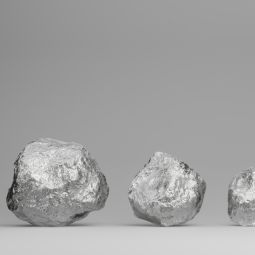
Aluminum, a metal renowned for its lightweight nature and high strength-to-weight ratio, is pivotal in various industries, including aerospace, automotive, and packaging. The primary source of aluminum is bauxite ore, which undergoes a complex process to extract the metal. The global quest for aluminum has led to exploring and exploiting bauxite deposits across several continents.
Let's look at where most aluminum ore is sourced from and how the mining and production processes have evolved.
The journey of aluminum from ore to finished product has significantly evolved since its discovery in the late 1800s. Initially, aluminum was considered a precious metal due to its rarity and difficulty in extraction—it was once even more valuable than gold! However, advancements in technology have made the mining and production of aluminum more efficient, making it a widely used metal in various applications.
Bauxite is primarily found in tropical and subtropical regions, with the largest deposits in Australia, Guinea, China, Brazil, and India. Australia, China, and Guinea are the top three bauxite producers, accounting for more than 60 percent of global production.
Bauxite mining involves clearing and removing overburden (vegetation, soil, and rocks) to access the ore below. The extracted bauxite then gets transported to a refinery, where it undergoes chemical and physical processes to produce alumina (aluminum oxide).
The next step in the process is converting alumina into aluminum metal. The most common method is electrolysis, which involves passing a high electric current through a molten mixture of alumina and cryolite (a mineral that lowers the melting point of alumina).
The mining and production of aluminum have a significant impact on the environment. Clearing land for bauxite mining can lead to deforestation and loss of biodiversity in the surrounding areas. Furthermore, the extraction process requires large amounts of energy, contributing to carbon emissions and climate change.
There are many efforts to reduce the environmental impact of aluminum production, such as using renewable energy sources and implementing more sustainable mining practices.
Understanding where aluminum is sourced from and the impact of its production is crucial in promoting responsible and sustainable use of this versatile metal. With ongoing advancements and innovations, the aluminum industry will likely continue evolving and improving its processes to meet the growing demand for this valuable resource. The next time you use an aluminum product, take a moment to appreciate the journey from bauxite ore to your hands.
If you need T-slot structural framing for your next project, A-Line Automation offers high-quality aluminum extrusion solutions. Whether it's for industrial automation, robotics, or custom solutions, A-Line Automation has the experience and expertise to meet your needs. Contact us today to learn more!